Spotlight on inks in India - The Noel D'Cunha Sunday Column
The USD 6.5-bn is the annual sales for printing inks in the Asia-Pacific market. The Indian numbers are USD 830-million which translates into ink consumption of 232 million tonness and a CAGR growth of 8-9%.
In this Sunday Column, PrintWeek India takes a look at the top ink companies in India
06 Oct 2018 | By Noel D'Cunha
The first quarter of 2018 was "very very good" says a leading ink producer. But raw material cost and availability have had a brutal impact, and there are tremors in the balance sheets of the ink majors in India.
Companies are planning to roll out a price increase across the portfolio of ink, coating and consumable products for 2018.
A combination of ongoing raw material supply disruptions, fluctuation of the Indian rupee (breached the Rs 74-mark against US dollar as I was penning this Sunday Column), and green initiatives, ranging from toluene-free to changes in FSSAI regulations, continue to challenge the supply chain and drive up the cost of products.
The talk in the ink circuit suggests a short supply of titanium dioxide (for white ink) and photoinitiators (for UV inks). Both are major concerns for ink producers. Furthermore, there is a raw material price increase, plus an increase in oil and naphtha prices.
Shailendra Singh, president of AIPIMA (All India Printing Ink Manufacturers Association), said, "The ink industry is grappling with several negative factors, which started in late 2017. It began with the disruption of raw material supplies from China, and though these are challenging times, the ink industry will weather this storm. It is now, more than ever that all constituents of the printing chain engage in collaborative empathetic discussions to identify equitable options on the path forward through these times and realise that this is the right thing to do, for the longer-term health of the industry.”
Singh added, “It is particularly, relieving to see, that large FMCG MNCs have started to think about price correction for their products, which if implemented, should positively impact the entire value chain. There are no firm forward indicators as of now, of any easing of the raw material situation, so one should expect surprises in the coming months and be ready for a roller coaster ride."
A look at the top five ink companies (global numbers and Indian presence)
DIC/Sun Chemical | USD 4.60-bn
DIC Corporation is the numero uno in many industries, including printing inks thanks to a bouquet of 170 companies. India numbers have been solid in both publication and packaging inks (which accounts for 30% of its sales value). Formerly, Coates of India, DIC produces 49,000 MTPA at its facilities in Noida, Kolkata, Bengaluru and Ahmedabad. The portfolio includes web and sheetfed offset; gravure and flexo inks, adhesives and functional coatings, for the publication and packaging inks. DIC is expected to see a bullish run because the Indian packaging industry is expected to reach USD 73-billion in 2020 from USD 46-billion last year.
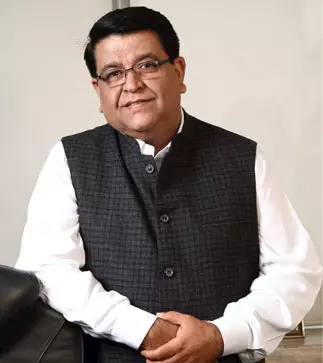
Shailendra Singh, MD and CEO of DIC India
Singh, MD and CEO of DIC India, said, "Clearly exciting times are ahead for DIC, as we have a comprehensive and complete product portfolio of inks and functional coatings to offer the packaging industry for printing on all types of substrates that offer specific value addition to the packaging and publication printing segments. DIC Group remains bullish about India and is actively working on a strategic growth plan for expanding its footprint in India, both for the inks and chemicals business by leveraging. Its robust product portfolio, institutionalised knowledge, consumer insights, R&D bandwidth, supply chain capabilities and an appetite for investments."
Flint Group | USD 2.50-bn
In 2013 Flint Group opened a new manufacturing facility in Vadodara’s Savli area in Gujarat. While the centre was targeted for liquid inks, Flint Group has expanded its range to narrow web, sheetfed and digital packaging products. According to Upal Roy, the general manager of Flint Group India, the objective was to be closer to customers and to set up a plant as per the guidelines which would provide international standard inks. "The facility will not only manufacture liquid ink but will also help in finding colour solutions for the print buyers and converters. Whenever there is a problem in regards to colour matching, our technical team from research and development department will provide right solutions," Roy had said.
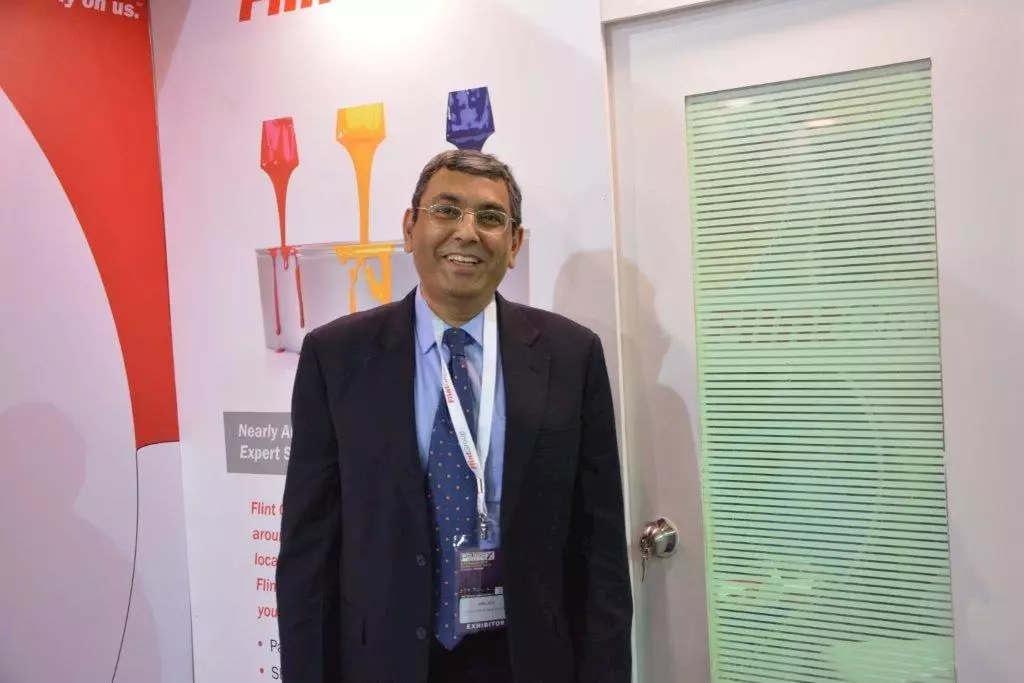
Upal Roy, general manager at Flint Group India
Flint Group in India started as a joint venture with Incowax in 2001 before becoming a 100% subsidiary in 2006. Till 2013, Flint had invested USD 25-million in the Indian operation.
Sakata Inx | USD 1.31-bn
The India ops are overseen by VK Seth who ensures Sakata produces 48,000 MTPA (gravure is 28,000 tons and offset 20,000 tons). The factories are located in Bhiwadi, and the new ink manufacturing plant at Panoli was launched in July 2014. Two-thirds of Sakata India’s revenue is dominated by packaging.
VK Seth of Sakata Inx
Sakata’s liquid inks are available for flexible packaging and comprise two-thirds of its business, Seth claimed. The remaining one-third comes from newspapers and sheetfed. "We have increased our manufacturing capacities, and consequently we did increase our share in major newspaper houses like TOI, HT, Dainik Jagran, ABP, Amar Ujala, Dainik Bhaskar, etc," said Seth.
Toyo Ink | USD1.30-bn
Toyo Ink India (TIID), a member of the Toyo Ink Group, celebrated the opening of its new manufacturing facility for plastic colorants in a traditional Rajasthani ceremony held on the factory premises in Dahej in Gujarat.

Katsumi Kitagawa, CEO, Toyo Ink Group
The Dahej plant is Toyo’s second plant in India, which was inaugurated in July 2014. The 21,100 sq/metre zero-discharge production plant was built on a one-lakh sq/metre site and has three divisions -the varnish division, the ink production and storage divisions.
"This is the second printing ink manufacturing facility that Toyo has set up after the first in Delhi, which was founded in 2007. India represents tremendous opportunities for us both as a market and a strategic hub to cover overseas demand, particularly Africa and the Middle East," said Toyo Ink Group CEO Katsumi Kitagawa, who inaugurated the Dahej plant.
Further, with the plastic colorant factory, TIID has become one among many of the Toyo Ink Group companies to have all three central operating companies viz. Toyo Ink, Toyo Chem and Toyo Color at one single location, that is, Dahej, Gujarat. This shows the kind of importance TIID has achieved in the Toyo Group within a decade of its founding in India.
Siegwerk Group | USD1.08-bn
Siegwerk has been in the news for two reasons. One is the toluene-free drive. It means, the Siegwerk Bhiwadi site is now toluene-free and doesn’t use toluene in the manufacturing process. The other things are, developing pigment grades that are created directly for Siegwerk and that provide independence, less risk and lower costs at optimal performance levels. The company produces polyurethane (PU) resins instead of purchasing them from third parties, which saves money and allows the German ink major to create PU-based inks, which provide the exact desired result. Siegwerk has a PU production facility in India.
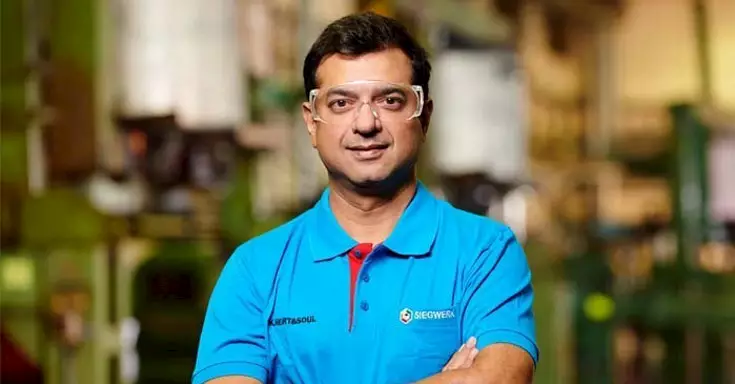
Ashish Pradhan, CEO at Siegwerk India
In 2016, Ashish Pradhan took over as the CEO at Siegwerk India ushering in a "new Siegwerk" with a futuristic outlook seeking to gallop on the road to success. In 2016 Siegwerk launched the first LED-UV flexo inks for food and pharmaceutical packaging, UV inkjet inks for labels, sustainable water-based inks for paper and board applications and a new ink range for gravure printing, based on a polyurethane binder system and free of polyvinyl chloride (PVC).
"Our focus is mapping the market in terms of customer experience and what we need to change within Siegwerk. We are trying to meet customer’s expectations plus calibrate/predict the manner in which the technology is moving," Pradhan said. He added, "There is a lot more interest today. We see many Asian countries move towards compliant product safety and regulations. China has moved towards a completely toluene-free system. They are much ahead when you talk about strong norms against volatile organic compounds (VOC). That is the segment which India is moving towards. It might take a while to happen, and probably by 2020 it will be done."
Hubergroup | USD 990-mn
A clear leader in India thanks to it the production of printing inks, coatings and pressroom auxiliaries at its four factories in Vapi, Silvassa and Daman. Hubergroup (formerly Micro Inks) has 40 companies serve the packaging, commercial and news printing segments. The India numbers are 2,03,000 metric tons per annum (MTPA) for printing inks, 67,600 MTPA for resins and varnishes, and 46,500 MTPA for pigments and flush colour.
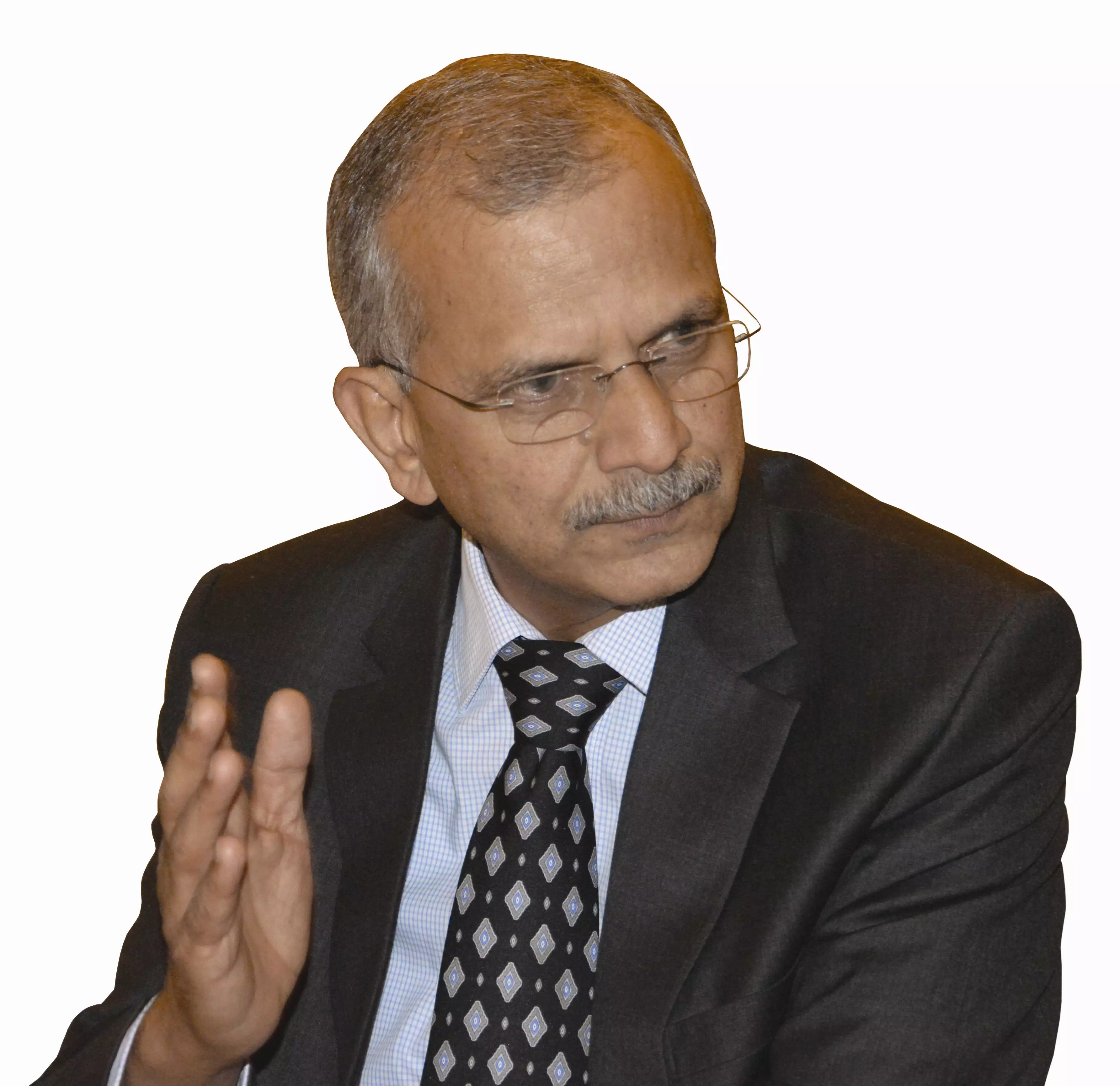
Ashwani Bhardwaj, managing director at Hubergroup India
Hubergroup launched two new inks for the packaging segments in India – Gecko brand for solvent base food safe ink for flexible packaging in 2015; and the low migration low odour food safe MGA system for the packaging industry.
According to Hubergroup, the requirements of packaging printing are safety, aesthetics and productivity; and the principles of safe packaging must include protecting its contents against damage and prevent them from going bad. Hence packaging must ensure that there is no contamination from the package, no change in the composition of the contents, no health risks to the consumers, and no change in the taste, smell, or visual appearance.
Hubergroup said that the two products in its packaging segment offer the highest level in safety on printing inks for food packaging. "These are new generation food packaging inks, which have been manufactured following the regulatory compliance prevalent in Europe, including the Swiss Ordinance, EuPIA guidelines and Nestle guidelines, among others," said Ashwani Bhardwaj, managing director at Hubergroup India.


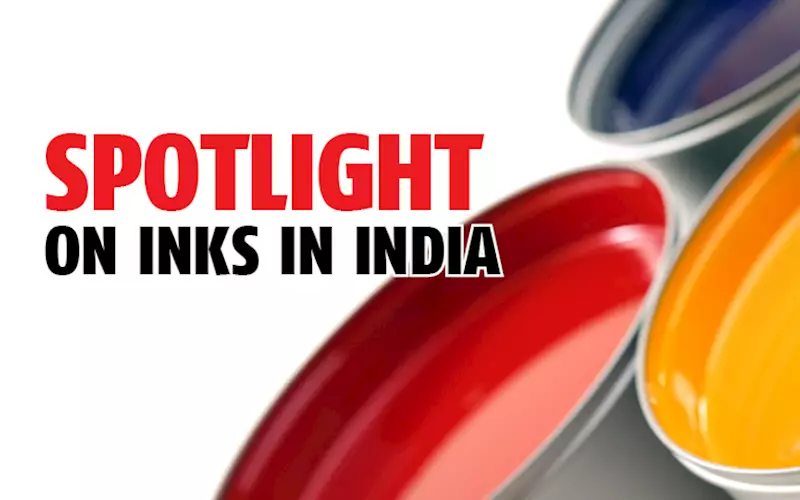









 See All
See All